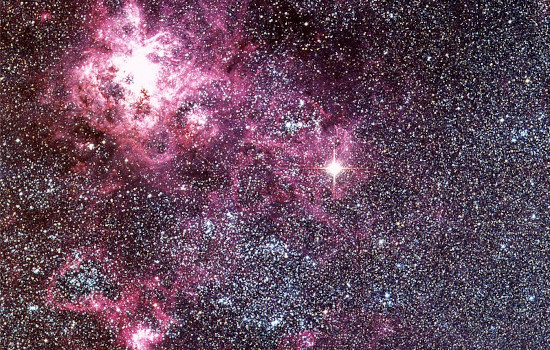Remember the Supernova in 1987 in the LMC? Well, there’s news….
Another article I've written for BINTEL - 23rd Feb 2023: What we see in the night sky seem timeless and eternal – things change on the timescale of millions or billions…

Another article I've written for BINTEL - 23rd Feb 2023: What we see in the night sky seem timeless and eternal – things change on the timescale of millions or billions…
A team of astronomers including those from the University of Tokyo have created the first-ever map of magnetic field structures within a spiral arm of our Milky Way galaxy. Previous…
Is this the faintest galaxy ever found? 350 unique galaxies were studied for this survey, and astronomers used several major radio telescopes around the world, including the National Science Foundation’s…
The Small Magellanic Cloud (SMC), a hazy blob in the night sky easily visible to people in the Southern Hemisphere, has long been considered a lone dwarf galaxy close to…
Mysterious New Signals Detected by SETI: Unlocking the Strange Puzzle of Fast Radio Bursts This work proves that new telescopes with unique capabilities, like the ATA, can provide a new…
The top regulatory agency for nuclear materials safety in the U.S. voted unanimously to regulate the burgeoning fusion industry differently than the nuclear fission industry, and fusion startups are celebrating that as a major…
Amazing to see a metal-rich galaxy so early in the Universe's history. Scanning the first images of a well-known early galaxy taken by NASA's James Webb Space Telescope (JWST), Cornell…
Astronomers say they have solved an outstanding problem that challenged our understanding of how the universe evolved—the spatial distribution of faint satellite galaxies orbiting the Milky Way. These satellite galaxies…
Two new studies suggest that certain tetrahedral arrangements of galaxies outnumber their mirror images, potentially reflecting details of the universe’s birth. But confirmation is needed. Physicists believe they have detected…
Why haven't we found wormholes? It might be because they look just like blackholes! A group of researchers at Sofia University has found evidence that suggests the reason that a…
With new algorithms and supercomputers, an incredibly detailed radio map of the universe has been created. Now astronomers can look at radio data of galaxies with much more precision. This…
The South African Radio Astronomy Observatory (SARAO) has released today a new MeerKAT telescope image of the centre of our Galaxy, showing radio emission from the region with unprecedented clarity…